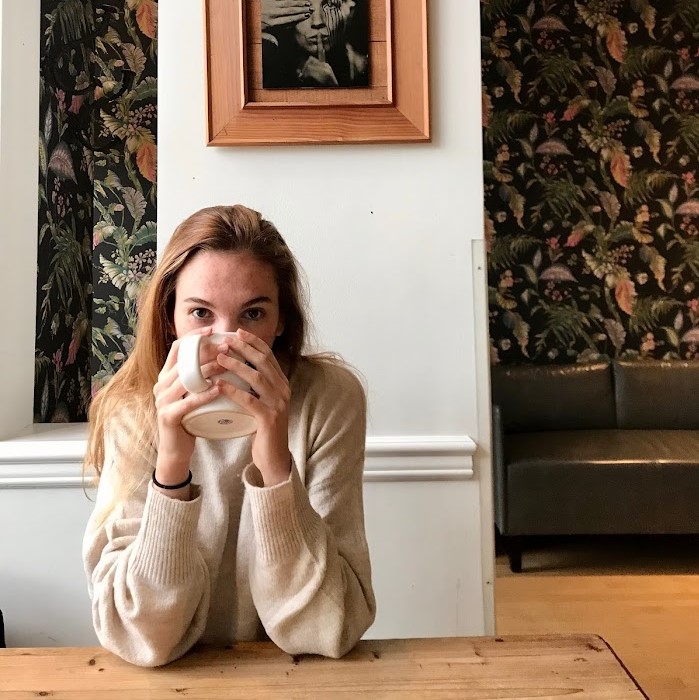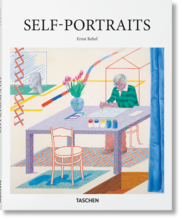More about Ernst Ludwig Kirchner
- All
- Info
- Shop
Works by Ernst Ludwig Kirchner

Contributor
I must be honest with you dear reader, I have a thing for German Expressionists.
Like, if I was alive back in the early 1900s when Die Brucke (The Bridge) was formed, I would have shamelessly forced my way into that circle, groupie style.
Anyways, enough about me and my unhealthy obsession with a group of old dead men; let’s talk about one of the founders of Die Brucke--Ernst Ludwig Kirchner. Kirchner was born on May 6, 1880 in Aschaffenburg, Germany near Frankfurt. From 1901-1905 he studied pictorial art at the Kunsthochschule in Munich where he produced woodcuts as well as paintings. Kirchner rejected the popularity of Impressionism that controlled the German art market in the early twentieth century, stating the the work was too bougie and outdated.
In 1905 he, along with four other German artists, founded Die Brucke, which today is known as the birth of Expressionism. Using unusual colors and distorted forms to produce an emotional response from the viewer, with the term “The Bridge” reflecting their youth and eagerness of Germany to progress at the turn of the century. But that’s not all, these boho men indulged in polyamorous relationships, having sexy time not only with each other, but also freely exchanging partners and models. Needless to say, they had a special affinity for FREEDOM. These guys made The Rolling Stones look like amateurs. But alas, as we now know, that happy feeling didn’t last long and the artists only maintained the group until 1913 -- a year before war broke out.
Like many youth at the time, Kirchner volunteered to join the army. Little did he know what he was getting into. During training he suffered a nervous breakdown resulting in his discharge. He remained in a mental hospital near Frankfurt for four years thereafter. In 1918, he moved to a town near Davos, Switzerland where many artists relocated after the war. It was here he spent the next 20 years creating works that we now categorize as German Expressionism.
But poor Kirchner just couldn’t catch a break. After almost two decades of success, Hitler’s rise to power resulted in the destruction of over 600 works of art by Kirchner. He was also labeled a degenerate artist by those douche-bag Nazis. At this point in his life, Kirchner’s mental health and physical state diminished and he ultimately died by suicide in 1938.
Sources
- "Ernst Ludwig Kirchner," Online Collection, , accessed September 21, 2018, https://www.guggenheim.org/artwork/artist/ernst-ludwig-kirchner.
- The Art Story Contributors. "Ernst Ludwig Kirchner's Life and Legacy." The Art Story. 2018. Accessed September 21, 2018. "Ernst Ludwig Kirchner Biography," Artnet, , accessed September 21, 2018, http://www.artnet.com/artists/ernst-ludwig-kirchner/biograph
- "Ernst Ludwig Kirchner," Online Collection, , accessed September 21, 2018, https://www.moma.org/artists/3115.
- "Ernst Ludwig Kirchner," Online Collection, , accessed September 21, 2018, https://www.guggenheim.org/artwork/artist/ernst-ludwig-kirchner.

Contributor
Ernst Ludwig Kirchner was Hitler’s least favorite artist but obviously he was just jealous because he sucked and Kirchner ruled.
Kirchner was one of the key catalysts of the Expressionist movement and started the Die Bruche group, a collection of artists who believed in portraying things not as they look, but as they feel. Unfortunately, this coincided with the banishment of “degenerate art” by the Third Reich in Germany. Hitler had a bit of a stick up his ass in terms of artistic style. So despite the fact that Kirchner was really good, his work was extensively mocked by the Nazis and then was either destroyed or was prevented from being sold or displayed.
Kirchner had a history of mental illness, which is how he got out of serving in the first World War, and spent his life in and out of treatment. But this inability to sell his work because of the Nazis really put him over the edge. So he moved to a small town in Switzerland called Davos, where he had previously spent some time getting treatment/getting hooked on morphine. (Side note: this sanatorium where Kirchner was treated was transformed into a hotel where to this day you can stay! But it’s a little too reminiscent of “The Shining” for me.) Moving here helped poor Ernst some, but not enough to keep him from committing suicide when he thought that Hitler might invade Switzerland. He left behind his model turned lover, Erna Schilling, who lived in the house where Kirchner killed himself until she herself died eight years later.
Kirchner’s suicide was a tragedy not only for his friends and family but also for the art world. In the short time that he created he revolutionized the concept of modern art, and if you look at his work towards the end of his life, it showed no sign of declining. So at least he went out with a bang (which is definitely not a joke about him shooting himself.)

Contributor
Ernst Ludwig Kirchner was born in Bavaria, famous for Oktoberfest and black forest cake.
The central theme of Kirchner's early work is nudes, but really, whose isn't? He was a founding member of The Bridge Group, a collective of like-minded artists who would meet up in an old butcher's shop to practice figure drawing. This predictably devolved into casual sex most of the time.
Kirchner spent much of his life struggling with mental health problems, and drug and alcohol addiction, but this didn't stop him from being a very productive artist. He unwisely volunteered for military service in WWI and suffered the first of several mental breakdowns.
Unlike many artists, Kirchner was quite successful during his life. He had regular shows at museums in Germany and Switzerland during the 1920s. He also had a catalogue of his design work published and was commissioned to paint several murals.
With WWII approaching, things took a serious turn for the worse. His artwork was labeled 'degenerate' by the Nazis who set about destroying more than 600 of his paintings. Kirchner shot himself and died outside his home in Switzerland, most likely because of the events surrounding the destruction of his artwork, his declining popularity after being labeled a degenerate artist, and the looming threat of Nazi invasion of Switzerland.
Featured Content
Here is what Wikipedia says about Ernst Ludwig Kirchner
Ernst Ludwig Kirchner (6 May 1880 – 15 June 1938) was a German expressionist painter and printmaker. He was one of the founders of the artists group Die Brücke or "The Bridge", a key group leading to the foundation of Expressionism in 20th-century art. Kirchner volunteered for army service in the First World War, but soon suffered a breakdown and was discharged. His work was branded as "degenerate" by the Nazis in 1933, and in 1937 more than 600 of his works were sold or destroyed.
Check out the full Wikipedia article about Ernst Ludwig Kirchner



















